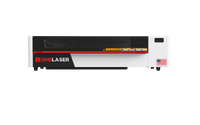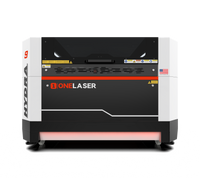The distinctive burnt smell from laser cut wood is a well-known side effect of the cutting and engraving process. While the scent is often harmless, it can linger on the final product, especially on raw edges or engraved surfaces, detracting from the professional quality of your work.
Whether you're producing high-end signage, personalized gifts, or decorative panels, learning how to remove burnt smell from laser cut wood is an important part of post-processing.
This guide outlines the causes of the smell, how long it typically lasts, and proven methods to eliminate it effectively.

1. Understanding Wood Burnt Smells
1.1 Why Laser Cut Wood Smells Burnt
Before exploring how to get rid of burnt smell from laser cutting, it's essential to understand the chemical and physical factors that generate the odor.
Cause: A laser works by vaporizing material at the focal point, generating heat that burns through the wood. This process releases smoke, soot, and volatile organic compounds (VOCs), which are absorbed into the wood fibers.
Variables: Different wood types produce different intensities of smell. Plywoods, MDF, and resin-heavy species like pine tend to emit stronger odors due to higher glue or sap content.
Edge Exposure: The smell is most pronounced on cut edges and deeply engraved surfaces, where the burn effect is most concentrated and less ventilated.
1.2 How Long Does the Burnt Smell Last Without Treatment?
If left untreated, the laser cut wood burnt smell may dissipate on its own, but results vary depending on environmental and material factors.
- Natural Dissipation: In well-ventilated areas, lighter woods may lose most of their odor within 3–10 days.
- Embedded Smell: Dense, resin-rich woods or tightly packed storage areas may retain the smell longer, sometimes weeks.
- Client Expectations: For consumer-facing or gift products, eliminating the odor proactively can improve perceived value and prevent customer complaints.
1.3 Best Wood Types for Reducing Burnt Smell
Not all woods behave the same under laser cutting. Selecting the right material can minimize the need for heavy post-processing.
- Low-Resin Woods: Basswood, alder, and maple burn cleaner with minimal smoke.
- Avoid High-Resin Sheets: Pine, cedar, and MDF produce more VOCs and require extra cleaning or sealing to control odor.
- Moisture Content: Kiln-dried or properly stored woods burn more cleanly than high-moisture stock, reducing lingering smoke and smell.
2. Pre-Cutting Measures to Minimize Burnt Odor
Reducing odor starts before you even begin cutting. Applying these techniques can significantly reduce the laser cut wood burnt smell during processing:
- Masking Tape: Apply paper-based masking tape over the intended cut path. This absorbs surface-level smoke and protects against edge charring.
- Air Assist Optimization: Use medium to high air assist settings to push away vaporized particles and cool the cutting zone in real time.
- Speed and Focus Settings: Use high-speed, high-power settings with proper focus to create clean vaporization instead of slow burns.
- Ventilation: A properly configured exhaust system removes airborne VOCs quickly and keeps the smell from saturating the workspace or materials.
3. Post-Cutting Cleaning Techniques
Once the laser cutting process is complete, physical cleaning is your first and often most effective, step in managing and eliminating the burnt smell from laser cut wood.
Much of the odor originates from charred residue and surface soot, which can be physically removed before any deodorizing or sealing treatments begin.
3.1 Edge Sanding
The edges of laser-cut wood typically hold the highest concentration of burnt fibers and residual carbon. These surfaces are often visibly darkened and can emit the strongest odor.
- Use a fine-grit sanding pad (between 220 and 320 grit) to gently sand the outer edges of the piece.
- A manual sanding block gives better control, especially around curves or detailed contours, while an orbital sander may be used for larger items.
- Avoid over-sanding if you're working with softwoods or thin veneers, as this can damage the finished shape or introduce unevenness.
This process not only removes the charred layer but also exposes fresh wood that hasn't absorbed as much smoke, greatly reducing the lingering odor.
3.2 Brush or Vacuum
Engraved details, especially deep raster or vector-etched designs, often trap fine soot and dust that contribute to the laser cut wood burnt smell.
- Use a soft-bristle brush (such as a toothbrush or detailing brush) to sweep debris from grooves and recessed areas.
- Alternatively, use compressed air to blow dust out of fine crevices. Be sure to do this in a ventilated area or with a dust collector active.
- For lighter residue, a vacuum with a brush attachment can also help lift particles without spreading them.
Thoroughly cleaning out these areas prevents embedded soot from continuing to release odor over time.
3.3 Surface Wipe-Down
Even areas that weren't directly cut may still hold a faint smell, especially from vaporized resin settling as smoke.
- Wipe all surfaces—front, back, and edges—with a lint-free microfiber cloth to remove fine particles without scratching the surface.
- For better results, lightly dampen the cloth with:
- Diluted wood-safe cleaner
- 50/50 mix of water and isopropyl alcohol
- Or a small amount of white vinegar, which can help neutralize surface-level odor compounds
- Avoid soaking the wood; apply cleaning solutions sparingly to prevent swelling, especially on unfinished or soft woods.
This step is essential before applying any finishes or sealants, as trapped residue can interfere with adhesion or cause the smell to persist beneath coatings.
Proper post-cut cleaning doesn't just reduce odor—it also improves visual quality and prepares the surface for finishing. Combined with deodorizing methods, these techniques create cleaner, more professional results that stand up to customer expectations in both look and scent.
4. Top Methods to Remove Burnt Smell from Laser Cut Wood
Here are five proven and practical methods to remove burnt smell from laser cut wood effectively. These approaches are widely used by both hobbyists and professional shops to neutralize odors before finishing or delivering products to customers.
4.1 Baking Soda Soak or Powdering
Baking soda (sodium bicarbonate) is a natural deodorizer that works by absorbing volatile organic compounds (VOCs)—the same compounds that cause lingering smells after laser cutting.
Method 1: Sealed Box Treatment
Place your laser-cut piece in an airtight container or storage bin alongside an open bowl or shallow dish filled with baking soda. Avoid direct contact with the wood to prevent moisture or chemical reaction.
Method 2: Surface Dusting
Lightly sprinkle baking soda directly onto the surface, especially near cut edges or engraved areas. After 24–48 hours, gently brush or vacuum off the powder.
Baking soda is most effective for light to moderate odors and is safe for use on unfinished wood.
4.2 White Vinegar Wipe
White vinegar is slightly acidic (acetic acid), making it highly effective at neutralizing alkaline smoke residues.
- Mix a solution of 50% white vinegar and 50% water in a spray bottle or bowl.
- Lightly mist the wood surface or dampen a microfiber cloth and wipe along the cut edges and engraved areas.
- Allow the piece to air dry completely in a well-ventilated area.
⚠️ Note:
Test vinegar on a small, inconspicuous area first—especially on stained or dyed wood—to avoid discoloration.
This method is especially useful for removing light, surface-level odors and prepping the piece for sealing or finishing.
4.3 Activated Charcoal or Odor Absorber Bags
Activated charcoal is widely used in air purification and odor control. Its porous structure traps and binds to organic molecules in the air—including burnt wood odors.
- Place your laser-cut items in a plastic bin or sealable container with either:
- Activated charcoal sachets
- Commercial odor absorber gel packs
- Bamboo charcoal bags (often used in closets or cars)
- Let them sit sealed for 1 to 3 days, depending on odor severity.
This passive method works well for items that can't be wiped down or are part of batch production where time is available for airing.
4.4 UV and Sunlight Exposure
Exposing your laser cut wood to natural sunlight is a highly effective, chemical-free option—particularly for lightly charred pieces.
- Set the items outside in indirect or partial sunlight (full sunlight if the wood is untreated and unpainted).
- Let them air out for 2–4 hours per day, flipping occasionally to expose all sides.
- UV rays help break down VOCs and speed up the dissipation of smoke-related compounds.
This method is ideal for large signs, artwork, or parts that have already been surface-cleaned and need further odor relief.
4.5 Lemon Oil or Odor-Sealing Finishes
For both odor masking and long-term protection, finishing the wood with oil or a clear coat is often the final step.
- Wipe down your project with lemon oil, orange oil, or a citrus-based wood conditioner. These natural oils leave a pleasant scent while mildly penetrating surface fibers.
- For stronger odor containment, apply a clear sealant such as:
- Water-based polyurethane (low odor, dries quickly)
- Shellac (alcohol-based and good for trapping smells)
- Oil-based finishes (slower drying, but durable)
Use multiple thin coats if the burnt smell is strong, allowing each coat to cure fully.
This method is especially effective for customer-facing products like home decor, personalized gifts, or retail-ready inventory.
5. Sealing Laser Cut Wood to Lock in or Eliminate Odor
Sealing provides a long-term solution to eliminate the laser cut wood burnt smell—especially on products meant for indoor use or gifting.
- Spray Polyurethane: Offers fast-drying protection and strong odor-blocking capability.
- Shellac or Water-Based Sealer: Suitable for natural or lightly finished items. Dries clear and safe for decorative use.
- Multiple Light Coats: Apply 2–3 thin layers rather than one heavy coat to avoid trapped fumes or blotching on softwoods.
6. FAQs
Q1: Will the burnt smell go away on its own over time?
Yes, but only for some materials and environments. Lighter woods may clear within a week, while dense or sealed items may retain odor indefinitely without treatment.
Q2: Can sealing wood trap the burnt smell inside?
Yes. If done immediately after cutting, sealing can lock in odors. It's best to deodorize the wood first, then apply a finish.
Q3: What is the fastest way to remove burnt smell from laser cut wood?
Baking soda or charcoal in a sealed container works quickly—often within 24 hours—without altering the material's appearance.
Q4: Should I wash laser cut wood to remove smell?
Avoid soaking wood. Instead, use gentle surface wipes with vinegar or alcohol to reduce residue without warping or swelling the material.
Q5: Why does MDF smell worse than solid wood after cutting?
MDF contains glues and formaldehyde that release pungent fumes when burned. It's more difficult to fully remove the odor compared to clean hardwoods.
Have Questions? Join Our Forum!
Conclusion
Mastering how to remove burnt smell from laser cut wood is critical for maintaining product quality, especially for customer-facing or high-detail pieces.
Whether you're sealing the piece, deodorizing it with natural agents, or optimizing your pre-cut workflow, each step helps reduce the long-term effects of laser cut wood burnt smell.
With careful planning and post-processing, you can produce cleaner, better-smelling results—boosting both customer satisfaction and perceived value.

 Liquid error (sections/image-banner line 171): invalid url input
Liquid error (sections/image-banner line 171): invalid url input






